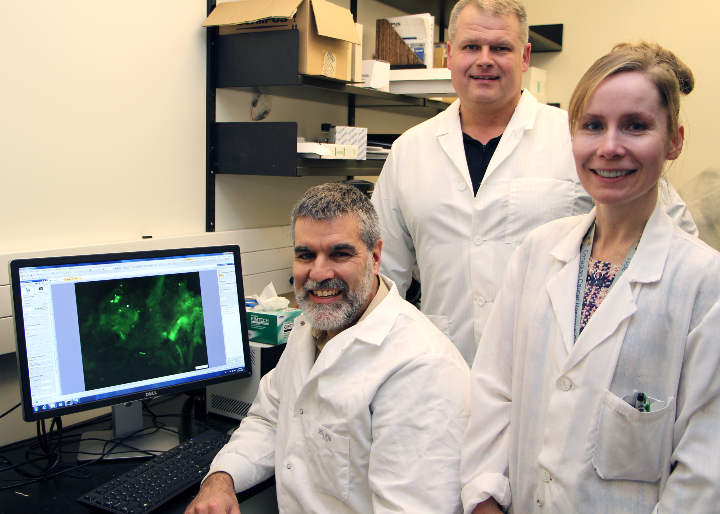Virologists studying the use of viruses to treat cancer have long seen acute vascular shutdown as a positive response to oncolytic virus (OV) therapy. This process, which is characterized by the drastic reduction of blood flow to a tumour after treatment, was believed to make OV treatment more effective by increasing oxygen starvation in cancer cells and sequestering the viruses within the tumours.
Now a team of scientists partially funded by the TFRI is challenging this paradigm after finding that vascular normalization – rather than shutdown – leads to more effective OV therapy. These findings, which were published in Clinical Cancer Research (September 2018), could open the door to improving the use of OVs for advanced epithelial ovarian cancer (EOC).
“Our research demonstrates that having a tumour with normal blood vessels, what we call vascular normalization, improves the efficacy of oncolytic viruses by allowing cells of the immune system such as natural killer cells, T cells and antibody-producing B cells to traffic efficiently into the tumour after treatment with the virus, which leads to a superior therapy,” said Dr. Byram Bridle (University of Guelph), a viral immunologist and TFRI New Investigator who co-led the study.
To reach this conclusion, Dr. Bridle and colleagues created a novel therapy that combined a drug named 3TSR used to normalize tumour vasculature, with a known oncolytic virus named Newcastle Disease Virus, known for its effectiveness in gynecological malignancies. Their hope was that the combination therapy would make tumours more permeable and reduce hypoxia, which in turn would enhance the uptake of the virus within the tumour and subsequent trafficking of effector leukocytes.
To test this theory the combination therapy was used in a mouse model of EOC with extremely positive results: primary tumour size was reduced, and a significant decrease was seen in the number of secondary lesions. In fact, according the paper, 50 per cent of the mice used in the study were completely devoid of visible secondary lesions, which is an extremely promising result, as secondary lesions are the main cause of death for women with EOC.
These observations represent a paradigm-changing approach to oncolytic virotherapy, and have spurred the team to start looking for ways to move the combination therapy forward for testing in patients.
“These results suggest that our therapy holds substantial potential for improving clinical outcomes for women diagnosed with highly fatal advanced-stage ovarian cancers,” said Dr. Bridle. "We intend to translate this approach into a clinical trial in women with this deadly condition and hope to explore the potential to use this approach to improve the treatments for other cancers.”

From left to right: Drs. Byram Bridle, Jim Petrik and Sarah Wootton (Photo by Karen Mantel, Ontario Veterinary College)
Study
Combining Vascular Normalization with an Oncolytic Virus Enhances Immunotherapy in a Preclinical Model of Advanced Stage Ovarian Cancer
Authors
Kathy Matuszewska, Lisa A. Santry, Jacob P. van Vloten, Amanda WK Au Yeung, Pierre P. Major, Jack Lawler, Sarah K. Wootton, Byram W. Bridle, Jim Petrik
Funding
This work was partially supported by a Terry Fox New Investigator Award to Dr. Byram Bridle for Development of Cutting-Edge Biotherapies for the Treatment of Bone Cancers.